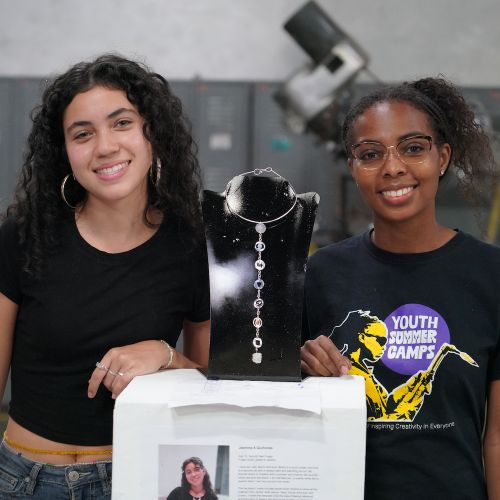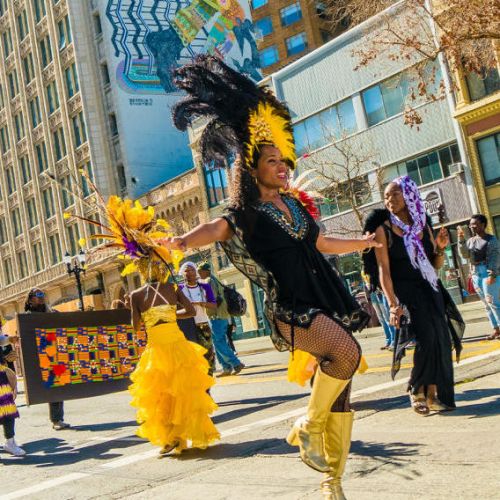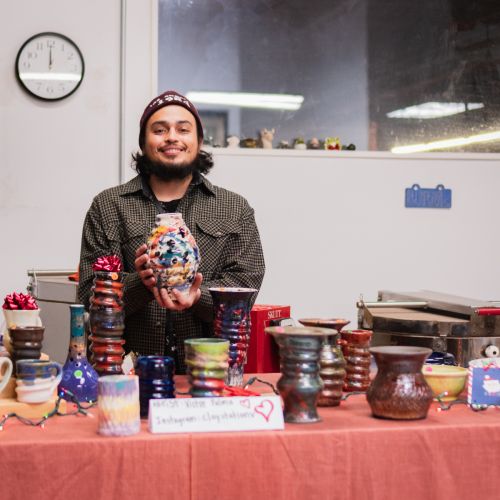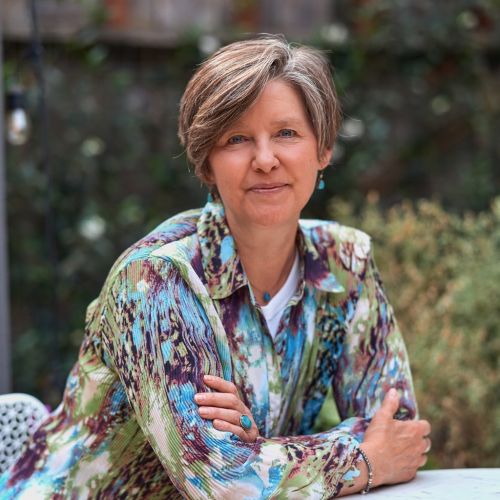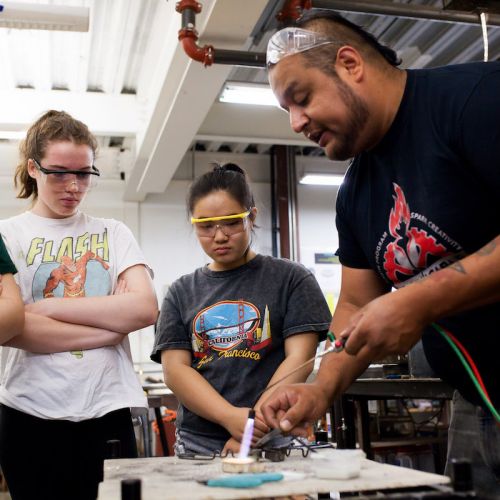by Cathy Niland

As someone who’s made art most of her life, Samantha Espinoza knows first hand the importance of arts education and the impact educators can have on a student’s creative confidence. She first visited The Crucible back in 2017 when she brought her high school students from Oakland Tech here for a field trip. Not long after, she joined our faculty in Leather, Textiles, and Fine Art so she could teach during youth summer camps.
Much of Samantha’s personal art work focuses on family history, cultural identity, and uplifting the voices of womxn of color. Now as our Youth Program Associate, she is working to increase awareness of our programs and scholarships for folks in the West Oakland neighborhood, especially low-income students and students of color.
How did you get into making art and what do you make?
I’ve always been into art. As soon as I could hold something in my hand I was drawing all over everything. Since I was a kid when teachers asked what I wanted to be when I grew up, it was always an artist. It never changed. I was really fortunate to have really good art teachers in middle school and high school that taught me a lot.
My schooling was in printmaking and I have done printmaking since I was about 13. I primarily do screen printing, relief printing, bookbinding, letterpress—any form of printing I’m into.
Did having good art teachers influence you to become a teacher?
Totally! I’ve always has good art teachers since I started school. It’s a rarity, but all my art teachers growing up were men of color, specifically black men who’d been doing fine art for years. It was in sixth grade when I was like, “I’m gonna be an art teacher for sure.”
How do culture and identity inform your art?
It’s really important for me to utilize all the tools I have. I want to contribute to a larger visual culture by being a voice that speaks to the experiences of other brown women. I try to draw from my own experiences, but I think the prominent voices of brown, black and native women is something that is incredibly lacking in most art—but especially printmaking, paper art, and book art.
What do you see as community at The Crucible?
In terms of the people who work here, we are like a band of misfits. We don’t really plug into conventional work spaces or art spaces, which is the cool thing about this place! We all embrace each other’s weirdness. And I think because of our kookiness people are not intimidated by us, which is awesome! I don’t want this place to ever be intimidating.
What inspires you about being at The Crucible?
What really drew me to The Crucible is our youth program, especially in the summer. It’s almost entirely made up of people of color teaching classes. I don’t think I’ve ever taught in a space where I’ve had almost all of my coworkers be people of color. Everyone’s really, really good at what they do, and people have been doing it for years, and it is amazing how many of our youth staff and faculty grew up in The Crucible’s youth program.
What keeps me here is providing really great quality services for folks in the neighborhood, especially youth who are often underrepresented and are not usually given opportunity or access to spaces like this.
Why is art making important?
Having a creative outlet saves a lot of people. It really does help—with their health, happiness, and confidence. It’s really rare when people get the chance to just sit down and dedicate a few hours to emotion and procedure without interruption, being alone with your thoughts. I love hearing kids shift from before the class, where they say, “I don’t really know if I’m creative”, then in one week they’re like, “I know this shit, I’m an artist!”
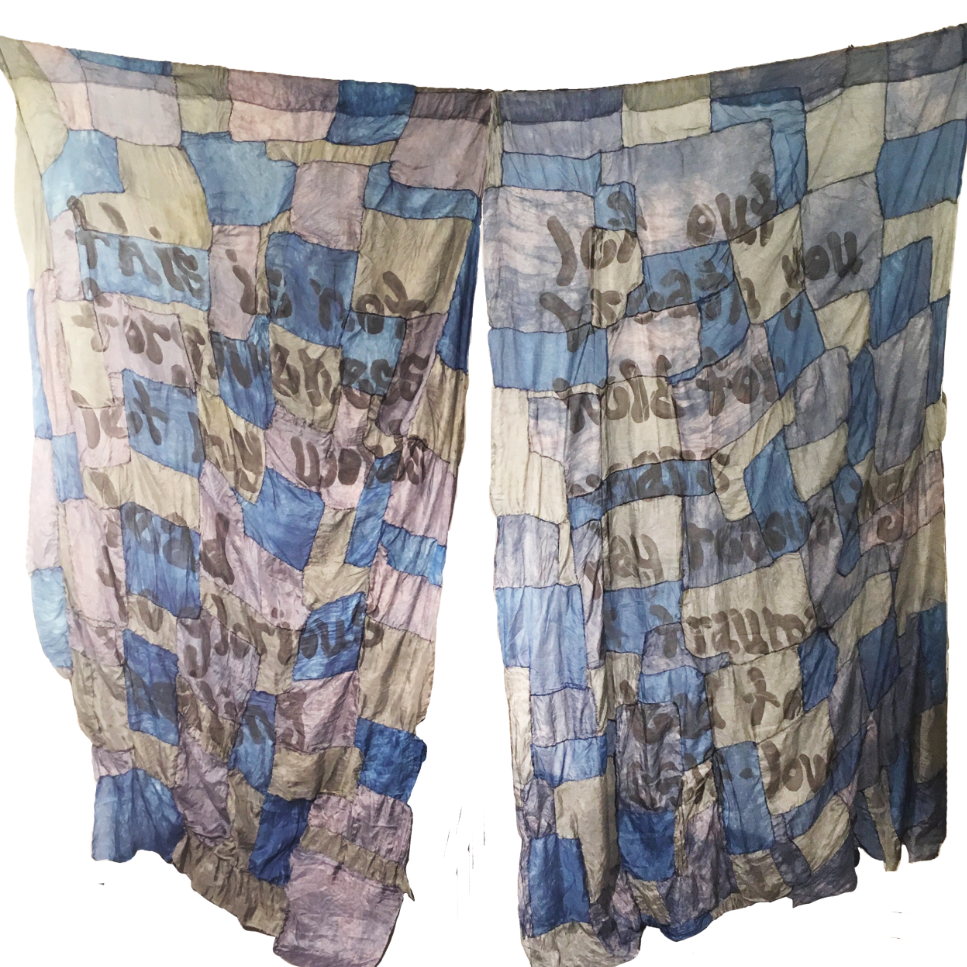
Curtains for Privacy, naturally dyed and hand stiched by the artist. To see more of Samantha’s work visit her website or follow her on Instagram.
